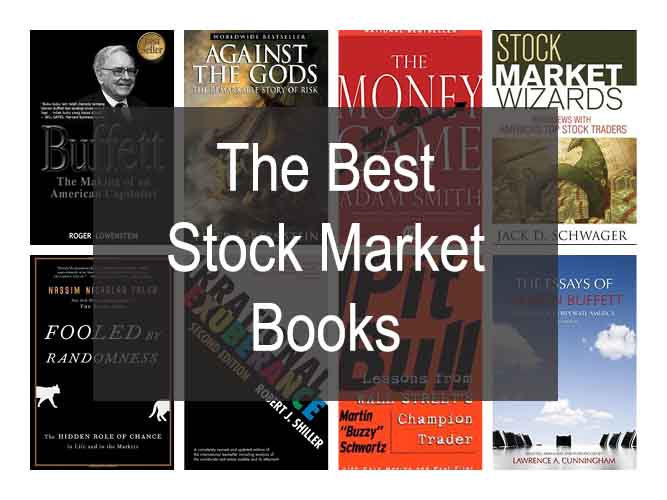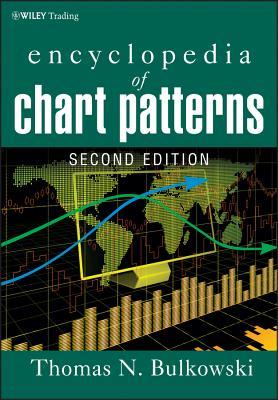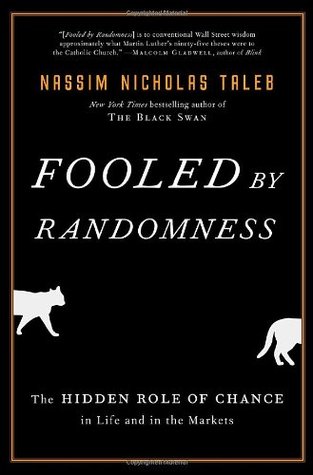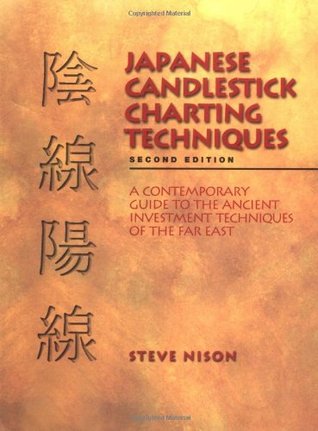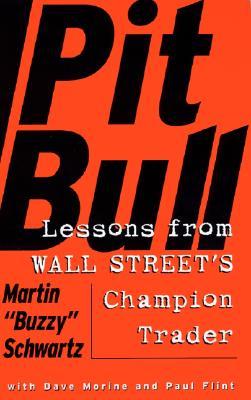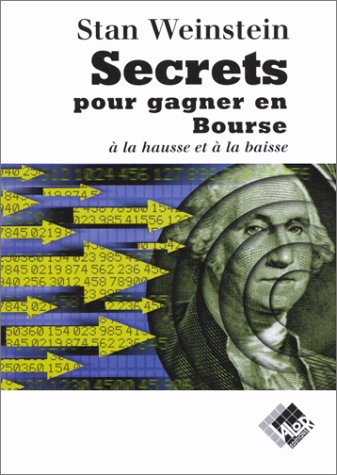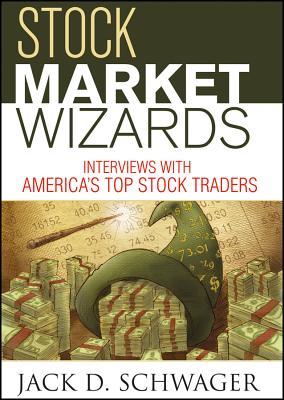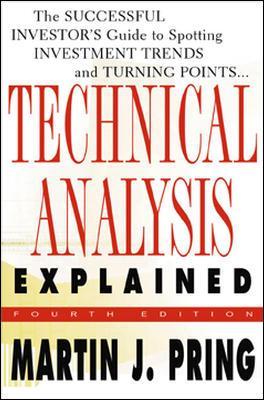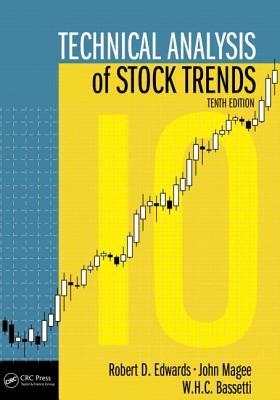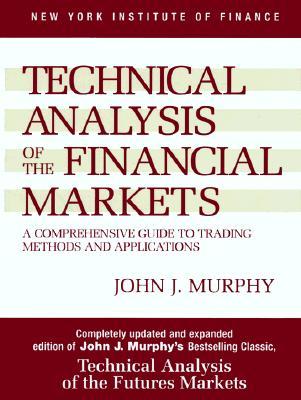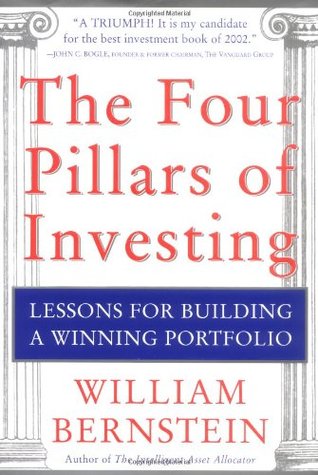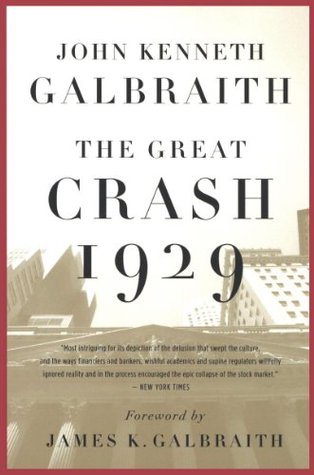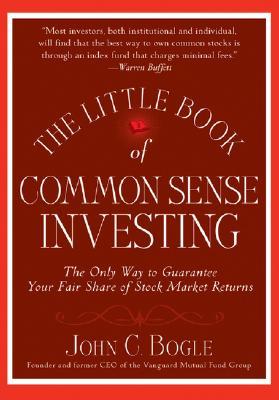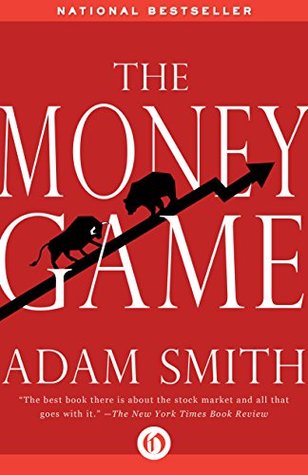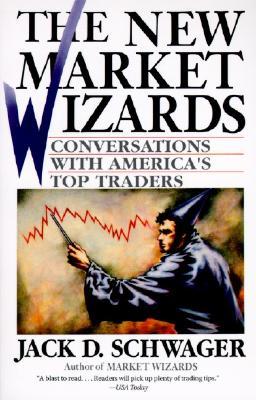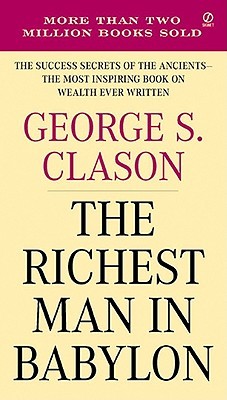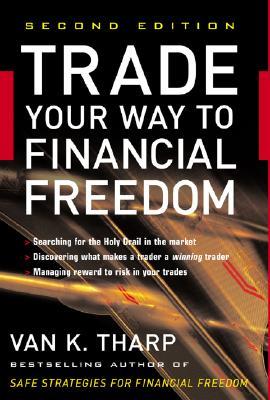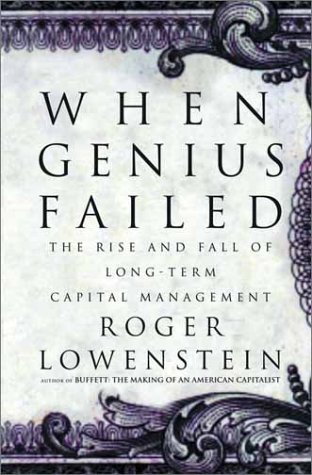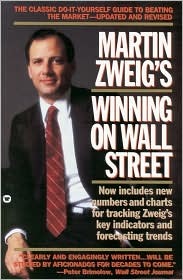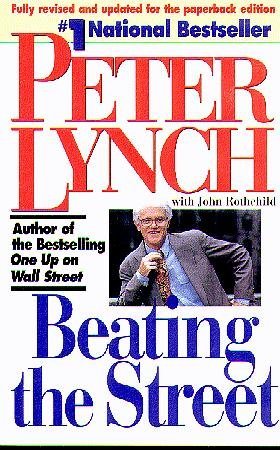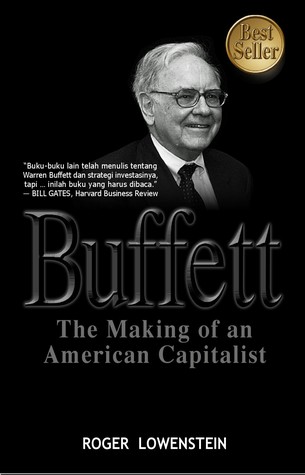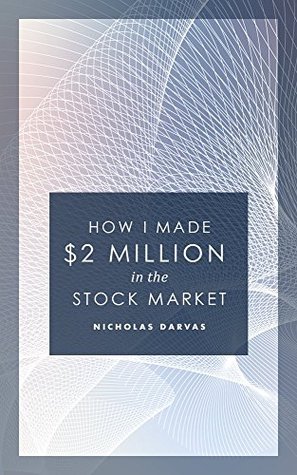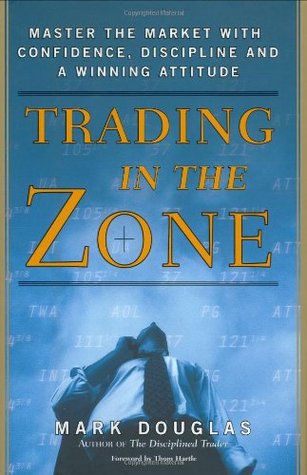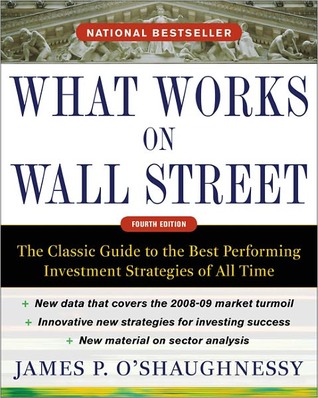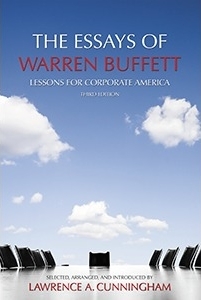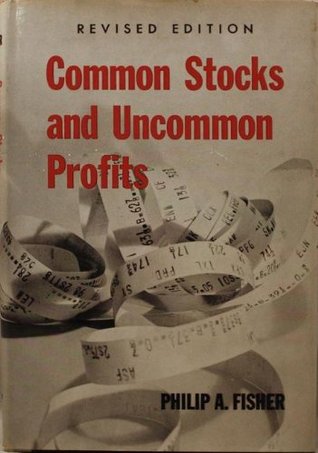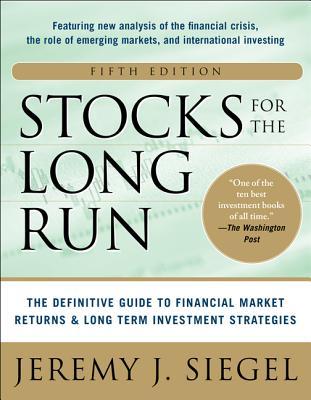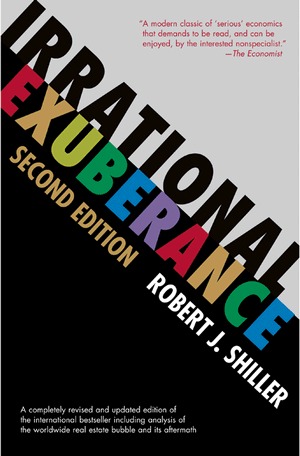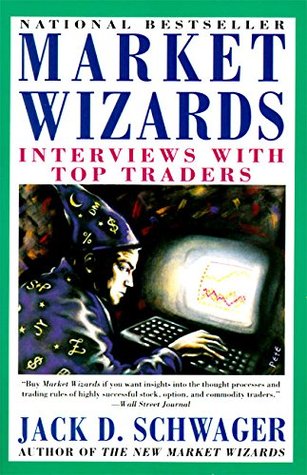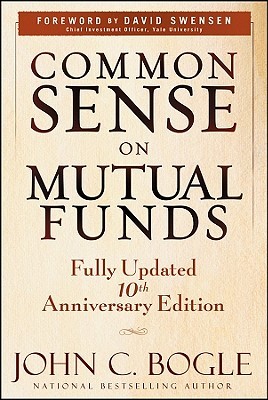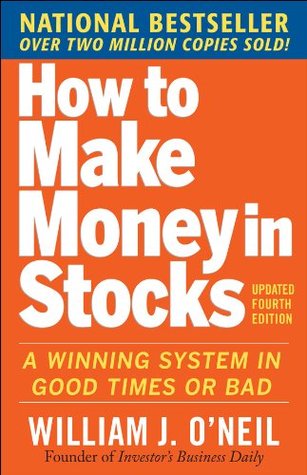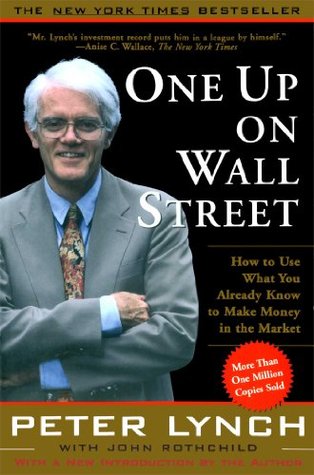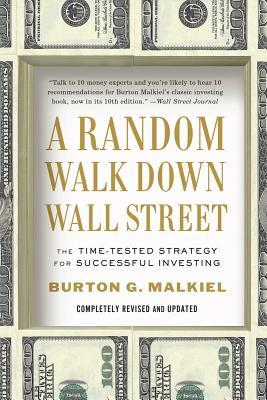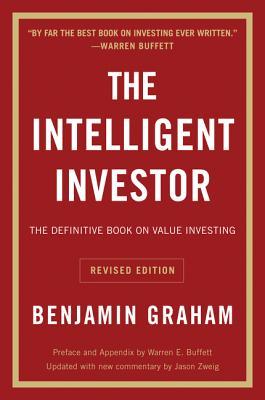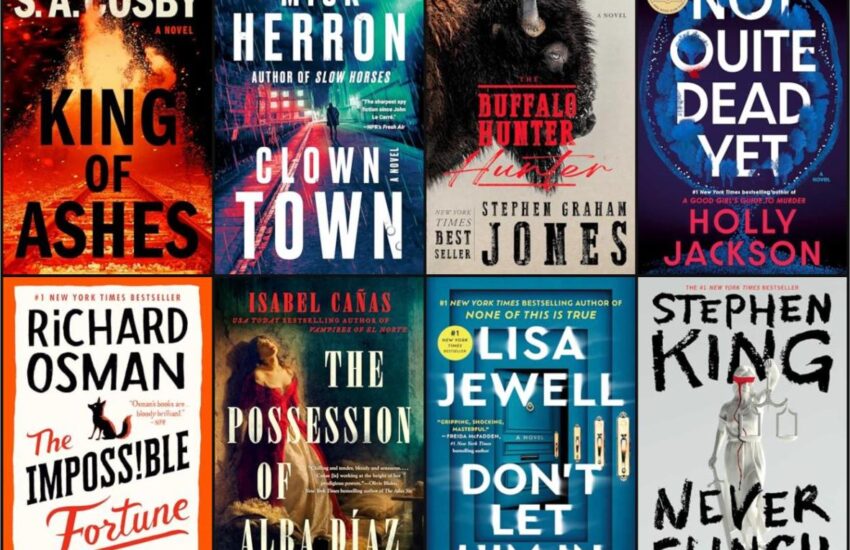Best Books To Learn About The Stock Market
“What are the best books to learn about the Stock Market?” We looked at 20 different lists and came away with 144 of the best books to help anyone get a better grasp on the stock market today.
Before jumping into this list we would recommend pre-funking with our global financial crisis article from earlier this week to learn about some of the shady consequences of the stock market. If you do plan on playing the stock market game though, it definitely doesn’t hurt to learn more about investing from some of the best sources you can.
When researching what the best books about the stock market were, we found over 140 different books with 37 of those appearing on multiple lists. The top books are included with images, summaries, and links to learn more or purchase below. The rest of the books along with the sources we used can be found at the bottom of the page.
Happy Scrolling!
The Best Books To Learn About The Stock Market
37 .) Against the Gods: The Remarkable Story of Risk by Peter L. Bernstein
- The Wall Street Journal
- The Street
In this unique exploration of the role of risk in our society, Peter Bernstein argues that the notion of bringing risk under control is one of the central ideas that distinguishes modern times from the distant past. Against the Gods chronicles the remarkable intellectual adventure that liberated humanity from oracles and soothsayers by means of the powerful tools of risk management that are available to us today.
36 .) Encyclopedia of Chart Patterns by Thomas Bulkowski
- Beginning Stock Trader
- Stock Trader
In this revised and expanded second edition of the bestsellingEncyclopedia of Chart Patterns, Thomas Bulkowski updates the classic with new performance statistics for both bull and bear markets and 23 new patterns, including a second section devoted to ten event patterns. Bulkowski tells you how to trade the significant events — such as quarterly earnings announcements, retail sales, stock upgrades and downgrades — that shape today?s trading and uses statistics to back up his approach. This comprehensive new edition is a must-have reference if you’re a technical investor or trader.
35 .) Fooled by Randomness by Nassim Taleb
- Moneychimp
- Stock Trader
Fooled by Randomness is a standalone book in Nassim Nicholas Taleb’s landmark Incerto series, an investigation of opacity, luck, uncertainty, probability, human error, risk, and decision-making in a world we don’t understand. The other books in the series are The Black Swan, Antifragile, and The Bed of Procrustes.
34 .) Japanese Candlestick Charting Techniques by Steven Nison
- The Lund Loop
- Stock Trader
A form of technical analysis, Japanese candlestick charts are a versatile tool that can be fused with any other technical tool, and will help improve any technician’s market analysis. They can be used for speculation and hedging, for futures, equities or anywhere technical analysis is applied. Seasoned technicians will discover how joining Japanese candlesticks with other technical tools can create a powerful synergy of techniques; amateurs will find out how effective candlestick charts are as a stand-alone charting method. In easy-to-understand language, this title delivers to the reader the author’s years of study, research and practical experience in this increasingly popular and dynamic approach to market analysis. The comprehensive coverage includes everything from the basics, with hundreds of examples showing how candlestick charting techniques can be used in almost any market.
33 .) Pit Bull: Lessons from Wall Street’s Champion Day Trader by Martin “Buzzy” Schwartz
- The Lund Loop
- The Huffington Post
Welcome to the world of Martin “Buzzy” Schwartz, Champion Trader–the man whose nerves of steel and killer instinct in the canyons of Wall Street earned him the well-deserved name “Pit Bull.” This is the true story of how Schwartz became the best of the best, of the people and places he discovered along the way and of the trader’s tricks and techniques he used to make his millions.
32 .) Rich Dad Poor Dad by Robert T. Kiyosaki
- eInvesting For Beginners
- Investopedia
Rich Dad Poor Dad, the #1 Personal Finance book of all time, tells the story of Robert Kiyosaki and his two dads—his real father and the father of his best friend, his rich dad—and the ways in which both men shaped his thoughts about money and investing. The book explodes the myth that you need to earn a high income to be rich and explains the difference between working for money and having your money work for you.
31 .) Secrets for Profiting in Bull and Bear Markets by Stan Weinstein
- Yahoo! Finance
- Liberated Stock Trader
Stan Weinstein’s Secrets For Profiting in Bull and Bear Marketsreveals his successful methods for timing investments to produce consistently profitable results.
30 .) Stock Market Wizards – Interviews with Americas Top Stock Pickers by Jack D. Schweiger
- The Lund Loop
- Liberated Stock Trader
It has been nearly a decade since the publication of the highly successful The New Market Wizards. The interim has witnessed the most dynamic bull market in US stock history, a collapse in commodity prices, dramatic failures in some of the world′s leading hedge funds, the burst of the Internet bubble, a fall into recession and subsequent rumblings of recovery. Who have been the market wizards during this tumultuous financial period? How did some traders manage to significantly outperform a stockmarket that during its heyday moved virtually straight up?
29 .) Technical Analysis Explained: The Successful Investor’s Guide to Spotting Investment Trends and Turning Points by Martin J. Pring
- Liberated Stock Trader
- Turner Investments
The face of investing has significantly changed in the 30 years since this book’s first publication, but one essential component of the markets has not–human behavior. Whether you’re trading cornerstone commodities or innovative investment products, observing how investors responded to past events through technical analysis is your key to forecasting when to buy and sell in the future. This fully updated fifth edition shows you how to maximize your profits in today’s complex markets by tailoring your application of this powerful tool.
28 .) Technical Analysis of Stock Trends by Robert D. Edwards & John Magee
- Beginning Stock Trader
- Liberated Stock Trader
In 1948 Robert D. Edwards and John Magee published “Technical Analysis of Stock Trends” which is widely considered to be one of the seminal works of the discipline. It is exclusively concerned with trend analysis and chart patterns and remains in use to the present. As is obvious, early technical analysis was almost exclusively the analysis of charts, because the processing power of computers was not available for statistical analysis. “Technical analysis” is a financial term used to denote a security analysis discipline for forecasting the direction of prices through the study of past market data, primarily price and volume. Behavioral economics and quantitative analysis incorporate technical analysis, which being an aspect of active management stands in contradiction to much of modern portfolio theory.
27 .) Technical Analysis of the Financial Markets: A Comprehensive Guide to Trading Methods and Applications by John J. Murphy
- Liberated Stock Trader
- Yahoo! Finance
This outstanding reference has already taught thousands of traders the concepts of technical analysis and their application in the futures and stock markets. Covering the latest developments in computer technology, technical tools, and indicators, the second edition features new material on candlestick charting, intermarket relationships, stocks and stock rotation, plus state-of-the-art examples and figures. From how to read charts to understanding indicators and the crucial role technical analysis plays in investing, readers gain a thorough and accessible overview of the field of technical analysis, with a special emphasis on futures markets. Revised and expanded for the demands of today’s financial world, this book is essential reading for anyone interested in tracking and analyzing market behavior.
26 .) The Four Pillars of Investing by William Bernstein
- Moneychimp
- The Street
“William Bernstein’s commonsense approach to portfolio construction has served investors well during the past turbulent decade―and it’s what made The Four Pillars of Investing an instant classic when it was first published nearly a decade ago.
This down-to-earth book lays out in easy-to-understand prose the four essential topics that every investor must master: the relationship of risk and reward, the history of the market, the psychology of the investor and the market, and the folly of taking financial advice from investment salespeople.”
25 .) The Great Crash by John Kenneth Galbraith
- The Huffington Post
- US News
Of John Kenneth Galbraith’s The Great Crash 1929, the Atlantic Monthly said: “Economic writings are seldom notable for their entertainment value, but this book is. Galbraith’s prose has grace and wit, and he distills a good deal of sardonic fun from the whopping errors of the nation’s oracles and the wondrous antics of the financial community.” Originally published in 1955, Galbraith’s book became an instant bestseller, and in the years since its release it has become the unparalleled point of reference for readers looking to understand American financial history.
24 .) The Little Book of Common Sense Investing by John Bogle
- Sprout Wealth
- Stock Trader
Investing is all about common sense. Owning a diversified portfolio of stocks and holding it for the long term is a winner’s game. Trying to beat the stock market is theoretically a zero-sum game (for every winner, there must be a loser), but after the substantial costs of investing are deducted, it becomes a loser’s game. Common sense tells us—and history confirms—that the simplest and most efficient investment strategy is to buy and hold all of the nation’s publicly held businesses at very low cost. The classic index fund that owns this market portfolio is the onlyinvestment that guarantees you with your fair share of stock market returns.
23 .) The Money Game by Adam Smith
- The Wall Street Journal
- Forbes
22 .) The New Market Wizards – Conversations with America’s Top Traders by Jack D. Schweiger
- The Lund Loop
- Liberated Stock Trader
In The New Market Wizards, successful traders relate the financial strategies that have rocketed them to success. Asking questions that readers with an interest or involvement in the financial markets would love to pose to the financial superstars, Jack D. Schwager encourages these financial wizards to share their insights. Entertaining, informative, and invaluable, The New Market Wizards is destined to become another Schwager classic.
21 .) The Richest Man in Babylon by George S. Clason
- eInvesting For Beginners
- Frugal Rules
Countless readers have been helped by the famous “Babylonian parables,” hailed as the greatest of all inspirational works on the subject of thrift, financial planning, and personal wealth. In language as simple as that found in the Bible, these fascinating and informative stories set you on a sure path to prosperity and its accompanying joys. Acclaimed as a modern-day classic, this celebrated bestseller offers an understanding of—and a solution to—your personal financial problems that will guide you through a lifetime. This is the book that holds the secrets to keeping your money—and making more.
20 .) Trade Your Way to Financial Freedom by Van Tharp
- The Lund Loop
- Stock Trader
This trading masterpiece has been fully updated to address all the concerns of today’s market environment. With substantial new material, this second edition features Tharp’s new 17-step trading model. Trade Your Way to Financial Freedom also addresses reward to risk multiples, as well as insightful new interviews with top traders, and features updated examples and charts.
19 .) When Genius Failed: The Rise and Fall of Long-Term Capital Management by Roger Lowenstein
- Turner Investments
- Stock Trader
When it was founded in 1993, Long-Term was hailed as the most impressive hedge fund in history. But after four years in which the firm dazzled Wall Street as a $100 billion moneymaking juggernaut, it suddenly suffered catastrophic losses that jeopardized not only the biggest banks on Wall Street but the stability of the financial system itself. The dramatic story of Long-Term’s fall is now a chilling harbinger of the crisis that would strike all of Wall Street, from Lehman Brothers to AIG, a decade later. In his new Afterword, Lowenstein shows that LTCM’s implosion should be seen not as a one-off drama but as a template for market meltdowns in an age of instability—and as a wake-up call that Wall Street and government alike tragically ignored.
18 .) Winning on Wall Street by Martin Zweig
- Liberated Stock Trader
- eInvesting For Beginners
Arthur Zweig is the publisher of the influential, trend-spotting Zweig Forecast. Now in this new edition Zweig adds the latest numbers to his classic investment primer and evaluates their impact on the challenging market at the turn of the century.
17 .) Beating the Street by Peter Lynch
- eInvesting For Beginners
- Investopedia
- Forbes
“An important key to investing, Lynch says, is to remember that stocks are not lottery tickets. There’s a company behind every stock and a reason companies—and their stocks—perform the way they do. In this book, Peter Lynch shows you how you can become an expert in a company and how you can build a profitable investment portfolio, based on your own experience and insights and on straightforward do-it-yourself research.
In Beating the Street, Lynch for the first time explains how to devise a mutual fund strategy, shows his step-by-step strategies for picking stock, and describes how the individual investor can improve his or her investment performance to rival that of the experts.”
16 .) Buffett: The Making of an American Capitalist by Roger Lowenstein
- The Wall Street Journal
- Stock Trader
- Forbes
“Starting from scratch, simply by picking stocks and companies for investment, Warren Buffett amassed one of the epochal fortunes of the twentieth century–an astounding net worth of $10 billion, and counting. His awesome investment record has made him a cult figure popularly known for his seeming contradictions: a billionaire who has a modest lifestyle, a phenomenally successful investor who eschews the revolving-door trading of modern Wall Street, a brilliant dealmaker who cultivates a homespun aura.
Journalist Roger Lowenstein draws on three years of unprecedented access to Buffett’s family, friends, and colleagues to provide the first definitive, inside account of the life and career of this American original. Buffett explains Buffett’s’ investment strategy–a long-term philosophy grounded in buying stock in companies that are undervalued on the market and hanging on until their worth invariably surfaces–and shows how it is a reflection of his inner self.”
15 .) Extraordinary Popular Delusions and The Madness of Crowds by Charles MacKay
- The Huffington Post
- Turner Investments
- Stock Trader
14 .) How I Made $2,000,000 in the Stock Market by Nicholas Darvas
- The Huffington Post
- The Lund Loop
- Beginning Stock Trader
Hungarian by birth, Nicolas Darvas trained as an economist at the University of Budapest. Reluctant to remain in Hungary until either the Nazis or the Soviets took over, he fled at the age of 23 with a forged exit visa and fifty pounds sterling to stave off hunger in Istanbul, Turkey. During his off hours as a dancer, he read some 200 books on the market and the great speculators, spending as much as eight hours a day studying.Darvas invested his money into a couple of stocks that had been hitting their 52-week high. He was utterly surprised that the stocks continued to rise and subsequently sold them to make a large profit. His main source of stock selection was Barron’s Magazine. At the age of 39, after accumulating his fortune, Darvas documented his techniques in the book, How I Made 2,000,000 in the Stock Market. The book describes his unique “Box System”, which he used to buy and sell stocks. Darvas’ book remains a classic stock market text to this day.
13 .) Trading In The Zone by Mark Douglas
- The Lund Loop
- Stock Charts
- Turner Investments
Douglas uncovers the underlying reasons for lack of consistency and helps traders overcome the ingrained mental habits that cost them money. He takes on the myths of the market and exposes them one by one teaching traders to look beyond random outcomes, to understand the true realities of risk, and to be comfortable with the “probabilities” of market movement that governs all market speculation.
12 .) What Works on Wall Street by James O’Shaughnessy
- eInvesting For Beginners
- The Telegraph
- Stock Charts
“Recent history has witnessed one of the worst stock market beatings ever. As a result, abysmal returns are being called “the new normal,” financial “experts” are ringing the death knell of buy-and-hold, and investors’ faith in equities has hit an all-time low. You have two choices. You can abandon the stock market based on what is happening today. Or you can invest today based on what will happen in the future.
Containing all new data, What Works on Wall Street, Fourth Edition, is the only investing guide that lets you see today’s market in its proper context― as part of the historical ebb and flow of the stock market. And when you see the data, you’ll see there is no argument: Stocks work.”
11 .) The Essays of Warren Buffett: Lessons For Corporate America by Warren Buffett
- Sprout Wealth
- US News
- Investopedia
- Turner Investments
The year 2015 marks the fiftieth anniversary of Berkshire Hathaway under Warren Buffett’s leadership, a milestone worth commemorating. The tenure sets a record for chief executive not only in duration but in value creation and philosophizing. The fourth edition of The Essays of Warren Buffett: Lessons for Corporate America celebrates its twentieth anniversary. As the book Buffett autographs most, its popularity and longevity attest to the widespread appetite for this unique compilation of Buffett’s thoughts that is at once comprehensive, non-repetitive, and digestible. New and experienced readers alike will gain an invaluable informal education by perusing this classic arrangement of Warren’s best writings.
10 .) Common Stocks and Uncommon Profits by Philip Fisher
- Investopedia
- Stock Trader
- US News
- eInvesting For Beginners
- Forbes
Widely respected and admired, Philip Fisher is among the most influential investors of all time. His investment philosophies, introduced almost forty years ago, are not only studied and applied by today’s financiers and investors, but are also regarded by many as gospel. This book is invaluable reading and has been since it was first published in 1958. The updated paperback retains the investment wisdom of the original edition and includes the perspectives of the author’s son Ken Fisher, an investment guru in his own right in an expanded preface and introduction
9 .) Stocks For The Long Run by Jeremy Siegel
- US News
- Investopedia
- The Street
- Wall Street Mojo
- Turner Investments
“Much has changed since the last edition of Stocks for the Long Run. The financial crisis, the deepest bear market since the Great Depression, and the continued growth of the emerging markets are just some of the contingencies directly affecting every portfolio in the world.
To help you navigate markets and make the best investment decisions, Jeremy Siegel has updated his bestselling guide to stock market investing.”
8 .) Irrational Exuberance by Robert J. Shiller
- US News
- Time.Money
- Investopedia
- Moneychimp
- Wall Street Mojo
- Stock Trader
In this revised, updated, and expanded edition of his New York Times bestseller, Nobel Prize-winning economist Robert Shiller, who warned of both the tech and housing bubbles, cautions that signs of irrational exuberance among investors have only increased since the 2008-9 financial crisis. With high stock and bond prices and the rising cost of housing, the post-subprime boom may well turn out to be another illustration of Shiller’s influential argument that psychologically driven volatility is an inherent characteristic of all asset markets. In other words, Irrational Exuberance is as relevant as ever. Previous editions covered the stock and housing markets–and famously predicted their crashes. This edition expands its coverage to include the bond market, so that the book now addresses all of the major investment markets. It also includes updated data throughout, as well as Shiller’s 2013 Nobel Prize lecture, which places the book in broader context. In addition to diagnosing the causes of asset bubbles, Irrational Exuberance recommends urgent policy changes to lessen their likelihood and severity–and suggests ways that individuals can decrease their risk before the next bubble bursts. No one whose future depends on a retirement account, a house, or other investments can afford not to read this book.
7 .) Market Wizards: Interviews With Top Traders by Jack D. Schwager
- The Lund Loop
- Stock Trader
- Liberated Stock Trader
- Wall Street Mojo
- Yahoo! Finance
- Stock Charts
How do the world’s most successful traders amass tens, hundreds of millions of dollars a year? Are they masters of an occult knowledge, lucky winners in a random market lottery, natural-born virtuosi—Mozarts of the markets? In search of an answer, bestselling author Jack D. Schwager interviewed dozens of top traders across most financial markets. While their responses differed in the details, all of them could be boiled down to the same essential formula: solid methodology + proper mental attitude = trading success. In Market Wizards Schwager lets you hear, in their own words, what those super-traders had to say about their unprecedented successes, and he distils their responses down into a set of guiding principles you can use to become a trading star in your own right.
6 .) Reminiscences of a Stock Operator by Edwin Lefèvre
- The Lund Loop
- Yahoo! Finance
- Stock Charts
- Stock Trader
- The Huffington Post
- Forbes
First published in 1923, Reminiscences of a Stock Operator is the most widely read, highly recommended investment book ever. Generations of readers have found that it has more to teach them about markets and people than years of experience. This is a timeless tale that will enrich your life—and your portfolio.
5 .) Common Sense on Mutual Funds by John C. Bogle
- Wall Street Mojo
- The Wall Street Journal
- US News
- Frugal Rules
- Investopedia
- Moneychimp
- The Street
Written in a straightforward and accessible style, this reliable resource examines the fundamentals of mutual fund investing in today’s turbulent market environment and offers timeless advice in building an investment portfolio. Along the way, Bogle shows you how simplicity and common sense invariably trump costly complexity, and how a low cost, broadly diversified portfolio is virtually assured of outperforming the vast majority of Wall Street professionals over the long-term.
4 .) How To Make Money In Stocks by William J. O’Neil
- Investopedia
- Liberated Stock Trader
- The Telegraph
- Wall Street Mojo
- Stock Trader
- The Lund Loop
- Stock Charts
Through every type of market, William J. O’Neil’s national bestseller, How to Make Money in Stocks, has shown over 2 million investors the secrets to building wealth. O’Neil’s powerful CAN SLIM® Investing System―a proven 7-step process for minimizing risk and maximizing gains―has influenced generations of investors.
3 .) One Up on Wall Street by Peter Lynch
- Stock Trader
- Forbes
- Investopedia
- Liberated Stock Trader
- Sprout Wealth
- Wall Street Mojo
- Turner Investments
America’s most successful money manager tells how average investors can beat the pros by using what they know. According to Lynch, investment opportunities are everywhere. From the supermarket to the workplace, we encounter products and services all day long. By paying attention to the best ones, we can find companies in which to invest before the professional analysts discover them. When investors get in early, they can find the “tenbaggers,” the stocks that appreciate tenfold from the initial investment. A few tenbaggers will turn an average stock portfolio into a star performer.
2 .) A Random Walk Down Wall Street by Burton G. Malkiel
- The Wall Street Journal
- eInvesting For Beginners
- US News
- Time.Money
- Frugal Rules
- Investopedia
- Moneychimp
- Sprout Wealth
- Wall Street Mojo
- Stock Trader
- The Street
In today’s daunting investment landscape, the need for Burton G. Malkiel’s reassuring, authoritative, and perennially best-selling guide to investing is stronger than ever. A Random Walk Down Wall Street has long been established as the first book to purchase when starting a portfolio. This new edition features fresh material on exchange-traded funds and investment opportunities in emerging markets; a brand-new chapter on “smart beta” funds, the newest marketing gimmick of the investment management industry; and a new supplement that tackles the increasingly complex world of derivatives.
1 .) The Intelligent Investor by Benjamin Graham
- The Wall Street Journal
- eInvesting For Beginners
- US News
- Time.Money
- Forbes
- Frugal Rules
- Investopedia
- Liberated Stock Trader
- Moneychimp
- Sprout Wealth
- Turner Investments
- Wall Street Mojo
- Stock Trader
- The Street
- The Huffington Post
“The greatest investment advisor of the twentieth century, Benjamin Graham, taught and inspired people worldwide. Graham’s philosophy of “”value investing”” — which shields investors from substantial error and teaches them to develop long-term strategies — has made The Intelligent Investor the stock market bible ever since its original publication in 1949.
Over the years, market developments have proven the wisdom of Graham’s strategies. While preserving the integrity of Graham’s original text, this revised edition includes updated commentary by noted financial journalist Jason Zweig, whose perspective incorporates the realities of today’s market, draws parallels between Graham’s examples and today’s financial headlines, and gives readers a more thorough understanding of how to apply Graham’s principles.”
The Best World Stock Market Books #38-144
(Appear on 1 list each)
| Accounts Demystified | Anthony Rice | The Telegraph |
| Alchemy of Finance | George Soros | Stock Trader |
| Analysis of Financial Statements | Leopold A. Bernstein, John J. Wild | Moneychimp |
| Backstage Wall Street: An Insider’s Guide to Knowing Who to Trust, Who to Run From, and How to Maximize Your Investments | The Lund Loop | |
| Bogleheads’ Guide to Investing | Taylor Larimore, Mel Lindauer, and Michael LeBoeuf | Moneychimp |
| Buy And Hedge | Jay Pestrichelli & Wayne Ferbert | Liberated Stock Trader |
| Capital Ideas | Peter Bernstein | Moneychimp |
| Chart Your Way to Profits: The Online Trader’s Guide to Technical Analysis | Tim Knight | The Huffington Post |
| Charting and Technical Analysis | Beginning Stock Trader | |
| Charting Financial Markets | Beginning Stock Trader | |
| Charting the Stock Market: The Wyckoff Method | Jack K. Hutson | Stock Charts |
| Come Into My Trading Room | Alexander Elder | Stock Charts |
| Competitive Strategy, | Michael Porter | Forbes |
| Confessions of an Economic Hit Man | John Perkins | The Huffington Post |
| Developing Profitable Trading Strategies | Beginning Stock Trader | |
| Elliott Wave Principle: Key to Market Behavior | A.J. Frost and Robert R. Prechter | Yahoo! Finance |
| Essentials to Start Investing Sucessfully | Beginning Stock Trader | |
| Financial Statement Analysis: A Practitioner’s Guide | Martin Fridson and Fernando Alvarez | Turner Investments |
| Full of Bull: Do What Wall Street Does, Not What It Says, To Make Money in the Market | Stephen T. McClellan | Liberated Stock Trader |
| Getting Started in Chart Patterns | Beginning Stock Trader | |
| Getting Started In Options | Michael C. Thomsett | Liberated Stock Trader |
| Good to Great: Why Some Companies Make the Leap . . . and Others Don’t | Jim Collins | Turner Investments |
| Guide to Economic Indicators | Norman Frumkin | Moneychimp |
| Hedge Fund Wizards | The Lund Loop | |
| How Markets Fail | John Cassidy | US News |
| How to Lie with Statistics | Darrell Huff | The Wall Street Journal |
| How to Read the Financial Pages | Michael Brett | The Telegraph |
| How to Trade in Stocks | Jesse Livermore | Liberated Stock Trader |
| If You Can | William Bernstein | Frugal Rules |
| In Search of Excellence: Lessons from America’s Best Run Companies | Thomas J. Peters and Robert H. Waterman, Jr. | Stock Charts |
| Intermarket Analysis and Investing | Beginning Stock Trader | |
| Interpreting Company Reports and Accounts | Geoffrey Holmes, Alan Sugden and Paul Gee | The Telegraph |
| Investing for Dummies | Eric Tyson | Stock Charts |
| Investment Biker: Around the World with Jim Rogers | Jim Rogers | Turner Investments |
| It’s Not What Stocks You Buy, It’s When You Sell That Counts: Understanding and Overcoming Your Self-Imposed Barriers to Investment Success | Donald L. Cassidy | Stock Charts |
| It’s When You Sell That Counts | Donald L. Cassidy | Stock Charts |
| Learn To Earn | Peter Lynch | Investopedia |
| Liar’s Poker | Michael Lewis | Stock Trader |
| Long Term Secrets to Short-Term Trading | Larry Williams | Stock Charts |
| Making the Most of Your Money | Jane Bryant Quinn | The Street |
| Manage Your Day-to-Day: Build Your Routine, Find Your Focus, and Sharpen Your Creative Mind | Jocelyn K. Glei | Stock Charts |
| Managing Your Investment Manager | Arthur Williams III | Turner Investments |
| Manias, Panics, and Crashes | Charles P. Kindleberger, | The Wall Street Journal |
| Mean Business: How I Save Bad Companies and Make Good Companies Great | The Lund Loop | |
| Momentum Masters | Beginning Stock Trader | |
| Money Masters of Our Time, | John Train | Forbes |
| Naked Economics | Charles Wheelan | Moneychimp |
| One Good Trade: Inside the Highly Competitive World of Proprietary Trading | The Lund Loop | |
| Options as a Strategic Investment | Lawrence G. McMillan | Yahoo! Finance |
| Portfolio Management Formulas: Mathematical Trading Methods for the Futures, Options and Stock Markets | Ralph Vince | Stock Charts |
| Sceptical Essays | Bertrand Russell | The Wall Street Journal |
| Searching for Alpha: The Quest for Exceptional Investment Performance | Ben Warwick | Turner Investments |
| Selecting Shares that Perform – 10 Ways to Beat the Stock Market | Richard Koch and Leo Gough | The Telegraph |
| Stan Weinstein’s Secrets For Profiting in Bull and Bear Markets | The Lund Loop | |
| Stock Investing For Dummies | Paul Mladjenovic | Wall Street Mojo |
| Stock Trader’s Almanac 2014 | Jeffrey A. Hirsch | Stock Charts |
| Strategic Bond Investor, | Anthony Crescenzi | Forbes |
| Surely You’re Joking, Mr. Feynman! | Richard Feynman | The Wall Street Journal |
| Technical Analysis for Dummies | Beginning Stock Trader | |
| Technical Analysis of the Futures Markets: A Comprehensive Guide to Trading Methods and Applications | John J. Murphy | Stock Charts |
| The 50 Best (and Worst) Business Deals of All Time | The Lund Loop | |
| The 86 Biggest Lies on Wall Street | John R. Talbott | Liberated Stock Trader |
| The Age of Turbulence | Alan Greenspan | Stock Trader |
| The Art and Science of Technical Analysis | Beginning Stock Trader | |
| The Art of Execution | Lee Freeman‑Shor | The Telegraph |
| The Art of Short Selling | Kathryn F. Staley | Yahoo! Finance |
| The Battle for Investment Survival | Gerald Loeb | Stock Charts |
| The Bible of Options Strategies | Guy Cohen | Liberated Stock Trader |
| The Big Short: Inside the Doomsday Machine | Michael Lewis | Yahoo! Finance |
| The Black Swan | Nicholas Nassim Taleb | US News |
| The Bogleheads’ Guide to Investing | Taylor Larimore | Frugal Rules |
| The Cartoon Guide to Statistics | Larry Gonick, Woollcott Smith | Moneychimp |
| The Daily Trading Coach: 101 Lessons for Becoming Your Own Trading Psychologist | Brett N. Steenbarger | The Huffington Post |
| The Day They Shook the Plum Tree | Arthur H. Lewis | Yahoo! Finance |
| The Disciplined Trader | The Lund Loop | |
| The Great Mutual Fund Trap | Gary Gensler and Gregory Arthur Baer | The Street |
| The Handbook of Portfolio Mathematics: Formulas for Optimal Allocation & Leverage | Ralph Vince | Stock Charts |
| The Handbook of Technical Analysis | Beginning Stock Trader | |
| The Investor’s Guide to Active Asset Allocation: Using Intermarket Technical Analysis and ETFs to Trade the Markets | Martin J. Pring | Stock Charts |
| The Little Book That Beats the Market | Joel Greenblatt | Stock Trader |
| The Mathematics of Money Management: Risk Analysis Techniques for Traders | Ralph Vince | Stock Charts |
| The New Financial Capitalists: KKR and the Creation of Corporate Value | The Lund Loop | |
| The New Money Management: A Framework for Asset Allocation | Ralph Vince | Stock Charts |
| The Scientific Outlook | Bertrand Russell | The Wall Street Journal |
| The Snowball: Warren Buffett and the Business of Life | Alice Schroeder | The Wall Street Journal |
| The Stock Twits Edge: 40 Actionable Trade Set-Ups from Real Market Pros | The Lund Loop | |
| The Successful Investor Today: 14 Simple Truths You Must Know When You Invest | Larry Swedroe | The Street |
| The Tao Jones Averages: A Guide to Whole-Brained Investing | Bennett W. Goodspeed | Turner Investments |
| The Templeton Touch | William Proctor | Turner Investments |
| The Ten Day MBA | Steven Silbiger | Moneychimp |
| The Trading Book: A Complete Solution to Mastering Technical Analysis and Trading Psychology | The Lund Loop | |
| The Visual Investor: How to Spot Market Trends | John J. Murphy | Stock Charts |
| The Winning Investment Habits of Warren Buffet and George Soros | Mark Tier | Liberated Stock Trader |
| The Zulu Principle | The Telegraph | |
| Thinking, Fast and Slow | Daniel Kahneman | The Wall Street Journal |
| Trade Like A Stock Market Wizard | Mark Minervini | Liberated Stock Trader |
| Trader Vic – Methods of a Wall Street Master | Victor Sperandeo | Liberated Stock Trader |
| Trader Vic II: Principles of Professional Speculation | Victor Sperandeo | Yahoo! Finance |
| Trading for a Living | Alexander Elder | Stock Charts |
| Trading with Intermarket Analysis | John J. Murphy | Stock Charts |
| Trend Following: Learn to Make Millions in Up or Down Markets | Michael W. Covel | The Huffington Post |
| Triumph of the Optimists | Elroy Dimson, Paul Marsh and Mike Staunton | The Wall Street Journal |
| Value Trap Indicator | Andrew Sather | eInvesting For Beginners |
| Way of the Turtle: The Secret Methods that Turned Ordinary People into Legendary Traders | Curtis M. Faith | Yahoo! Finance |
| What Do You Care What Other People Think? | Richard Feynman | The Wall Street Journal |
| When to Sell | Justin Mamis | Wall Street Mojo |
| Where Are the Customers’ Yachts? | Fred Schwed | The Wall Street Journal |
| Why Smart People Make Big Money Mistakes and How to Correct Them | Gary Belsky and Thomas Gilovich | The Wall Street Journal |
The Best Stock Market Book Sources
